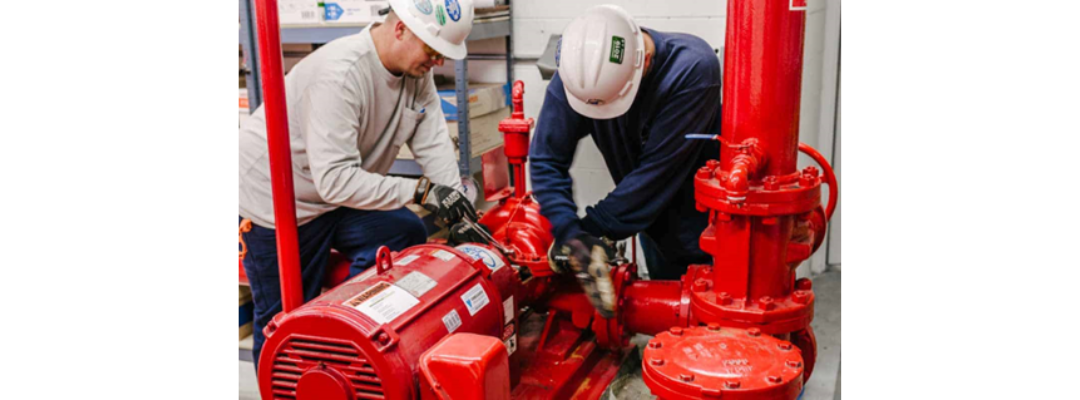Fire safety is paramount in any residential, commercial, or industrial setting. A crucial component of fire safety systems is a reliable fire pump, particularly vertical multistage fire pumps, which are known for their efficiency and compact design. However, like any system, these pumps require regular maintenance to ensure optimal performance and longevity. This essential guide outlines the key maintenance practices for vertical multistage fire pumps.
1. Understanding Vertical Multistage Fire Pumps
Vertical multistage fire pumps are designed to deliver high flow rates and pressures, making them ideal for firefighting applications. They consist of multiple impeller stages, allowing for increased pressure without increasing the overall size of the pump. Given their critical role in fire protection, regular maintenance is indispensable.
2. Key Maintenance Practices
1. Regular Inspections
Conducting frequent inspections is the first step in maintaining your fire pump. Aim for a monthly visual inspection and a comprehensive review every three to six months. Check for:
- Leaks: Inspect for any signs of leakage around the pump casings and fittings. Leaks can lead to decreased performance and potential damage.
- Corrosion: Look for signs of corrosion on components, especially in water supply lines and pump casings. Corrosion can weaken the system’s integrity.
- Vibration: Unusual vibrations can indicate misalignment or wear on bearings. Identifying and addressing these issues early can prevent costly repairs.
2. Routine Testing
Ensure the fire pump is tested regularly to verify its operational performance. Key tests include:
- Flow Testing: Measure the flow rate and pressure to ensure they meet the specifications outlined in the design. Flow tests should mimic real-world scenarios as closely as possible.
- Alarm Systems: Test alarms and notification systems to confirm that they function correctly when the pump is activated.
3. Lubrication
Proper lubrication of pump bearings is essential for smooth operation. Check the manufacturer’s specifications for the type of lubricant and follow these guidelines:
- Frequency: Lubricate bearings as specified, generally every few months or during inspections.
- Quality: Use only the recommended lubricants to avoid damaging components.
4. Cleaning
Dirt and debris can hinder the operation of fire pumps. Regular cleaning is essential:
- Pump and Motor: Keep the exterior of the pump and motor clean from dust, dirt, and other contaminants to ensure efficient cooling and operation.
- Strainers and Filters: Clean or replace strainers and filters as necessary to prevent clogging and maintain optimal flow.
3.Check Valves
Valves are crucial to the operation of a fire pump. Regularly inspect and maintain:
• Check Valves: Ensure they are functioning correctly to prevent backflow.
• Control Valves: Test all control valves to ensure they are operational and not obstructed.
4.Review Electrical Components
The electrical components of the fire pump system are just as important as its mechanical parts. Regularly review:
• Wiring: Inspect for any signs of wear, fraying, or corrosion.
• Connections: Check electrical connections to ensure they are secure and free from moisture or oxidation.
• Power Supply: Test the power supply to make sure the pump will activate when required.
5.Documentation
Maintain thorough records of all maintenance activities, inspections, repairs, and replacements. This documentation can help in:
• Compliance: Meeting regulatory requirements for fire protection systems.
• Future Maintenance: Tracking the history of the pump’s performance and maintenance needs.
6.Professional Servicing
While many maintenance tasks can be performed in-house, consider scheduling quarterly or annual reviews with a certified fire pump technician. Professionals can provide deeper insights and address complex issues that might arise.
Conclusion
Maintenance of vertical multistage fire pumps is not just a compliance measure, but a critical aspect of fire safety that ensures readiness in emergency situations. By integrating these maintenance practices into your facility management routine, you can enhance the reliability and efficiency of your fire protection system, ultimately ensuring the safety of occupants and property. Always consult the manufacturer’s specifications and guidelines for the best maintenance practices tailored to your specific pump model. Regular maintenance is a proactive approach that pays off in the long run, saving money and lives.

